You’re in the middle of cooking a delicious meal, and suddenly, you notice the pan has a scorched bottom. The aroma of burnt food fills the air, replacing the delightful scent of your culinary creation. Don’t worry; this is a common kitchen dilemma that many face. The good news is that a scorched pan doesn’t have to be a ruined pan. This comprehensive guide will walk you through various methods to clean that stubborn scorch off your pan, making it look almost as good as new. So, let’s dive in and turn this kitchen mishap into a learning experience.
Contents
The Reasons Behind Scorched Pans
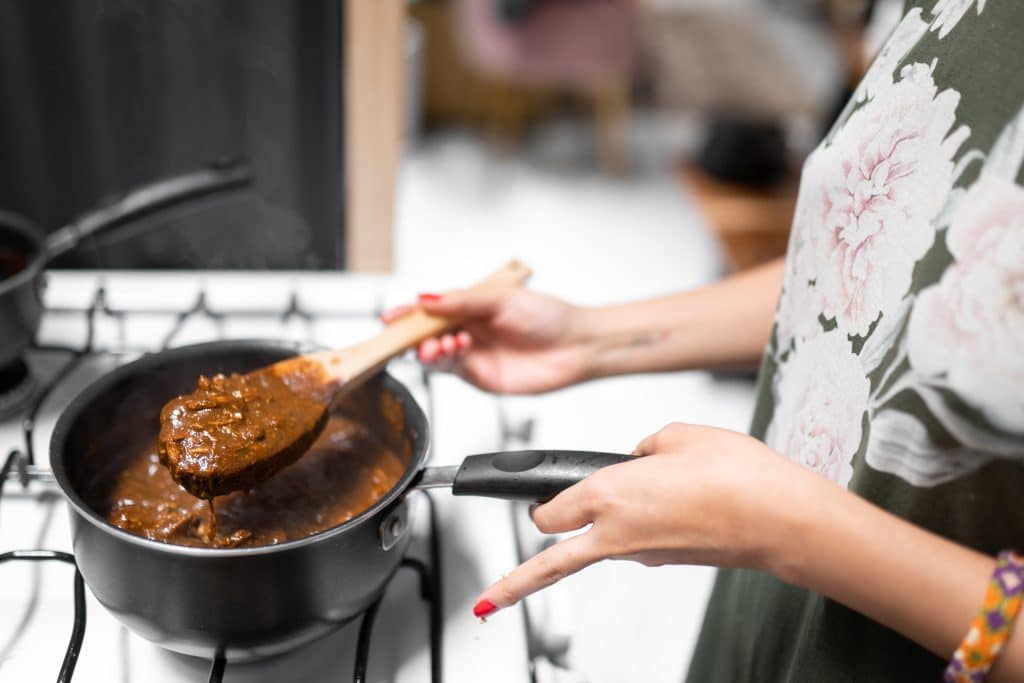
First, let’s delve into the science that leads to pans getting scorched. When food or liquid gets overheated, it can cause a chemical reaction that leads to discoloration and residue sticking to the pan. This is more likely to happen if you’re cooking on high heat or using ingredients that are prone to sticking. Knowing the science behind it can help you take preventive measures in the future.
Next, it’s essential to identify the usual suspects that contribute to this problem. High heat is a common culprit, but other factors like cooking acidic foods or sugary sauces can also lead to scorching. Even the type of cookware you’re using can play a role. For example, non-stick pans are less likely to get scorched compared to stainless steel pans. Being aware of these factors can help you avoid them and keep your pans in pristine condition.
Assess The Damage
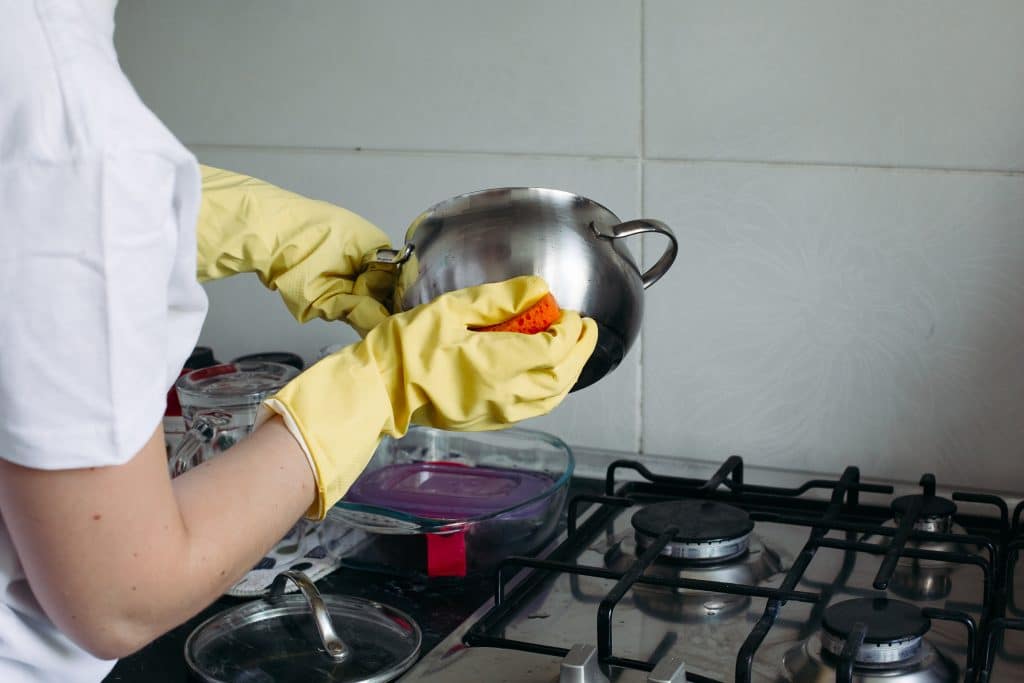
Before diving into cleaning methods, it’s crucial to assess the level of damage to your pan. The material of your pan—be it stainless steel, non-stick, or cast iron—will dictate the cleaning approach you should take. For instance, non-stick pans require a gentler touch to avoid damaging the coating, while cast iron pans can handle more abrasive methods.
After identifying the material, categorize the damage as mild, moderate, or severe. Mild damage might just require some soapy water and a sponge, while severe damage could necessitate specialized cleaning agents. Knowing the extent of the damage will help you choose the most effective cleaning method, saving you both time and effort.
Everyday Household Solutions
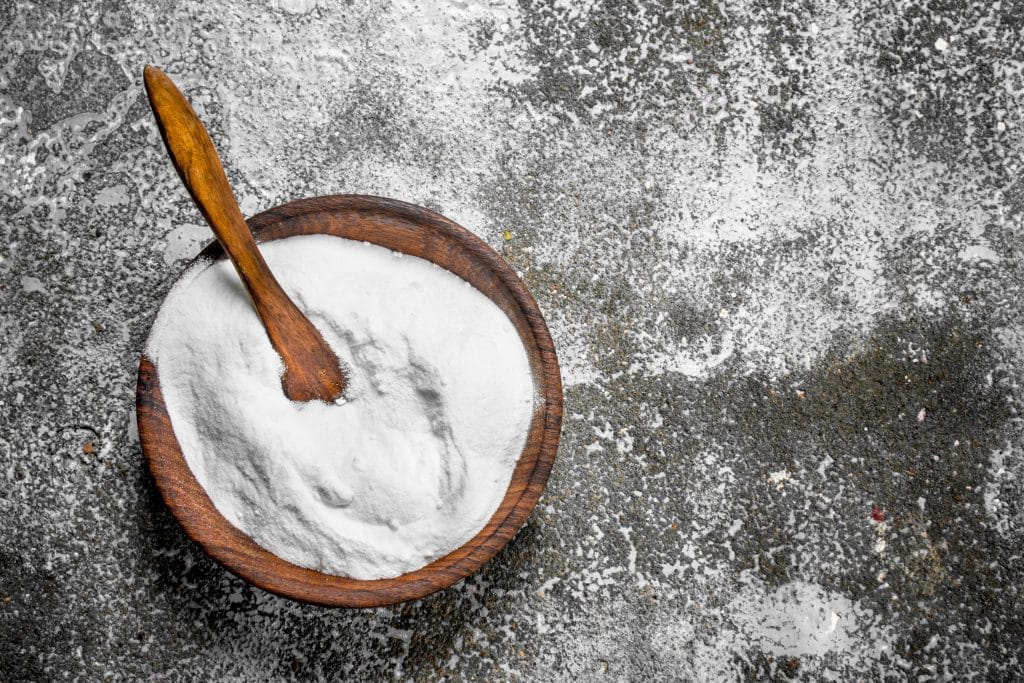
You’d be surprised at how effective common household items can be in tackling scorched pans. One popular method involves using a mixture of baking soda and water. Create a paste and apply it to the affected area, letting it sit for a few minutes before scrubbing. The baking soda acts as a mild abrasive that can lift off the burnt residue without damaging the pan.
Another household hero is vinegar. Fill the scorched pan with a mixture of equal parts water and white vinegar and bring it to a boil. The acid in the vinegar helps to loosen the burnt particles, making it easier to scrub away the scorch marks. This method is particularly effective for stainless steel and aluminum pans but should be avoided for cast iron cookware, as the acid can remove the seasoning.
Specialized Cleaning Agents
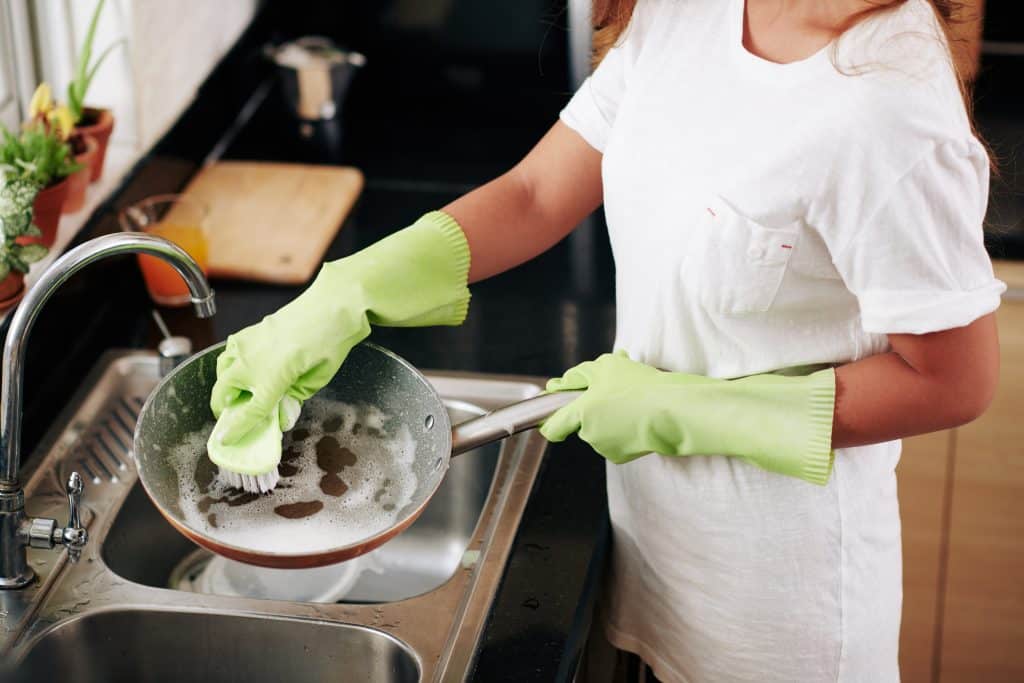
Sometimes, the scorch marks are so stubborn that household remedies just won’t cut it. In such cases, specialized cleaning agents designed for cookware can come to the rescue. Brands like Bar Keepers Friend and Easy-Off offer products that are specifically formulated to tackle burnt-on residue. These commercial cleaners often contain stronger chemicals that can break down even the most stubborn scorch marks.
However, if you’re more of a DIY person, you can make your own potent cleaning solutions. A mixture of hydrogen peroxide and baking soda can be highly effective. Apply the mixture to the scorched area and let it sit for a few minutes before scrubbing. This homemade solution is particularly useful for stainless steel pans but should be used cautiously on non-stick surfaces to avoid damaging the coating.
The Power Of Elbow Grease
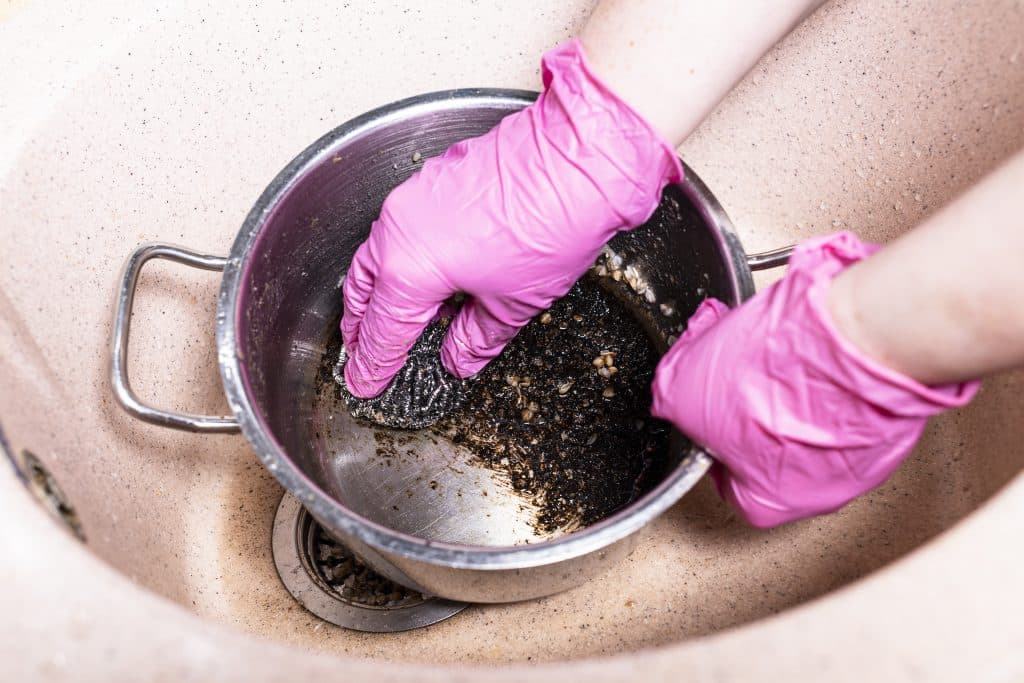
No matter what cleaning agent you use, a little elbow grease is often necessary to fully remove scorch marks. Various scrubbing tools can be employed for this purpose, such as steel wool, scouring pads, or even an old toothbrush for those hard-to-reach corners. The key is to use a scrubber that is appropriate for your pan’s material to avoid causing further damage.
The technique of scrubbing is also crucial. Use circular motions, and don’t press too hard, as excessive force can damage the surface of the pan. It’s a balancing act between being firm enough to remove the scorch marks and gentle enough to preserve the integrity of your cookware. Remember, patience is key; take your time to do a thorough job.
What Not To Do
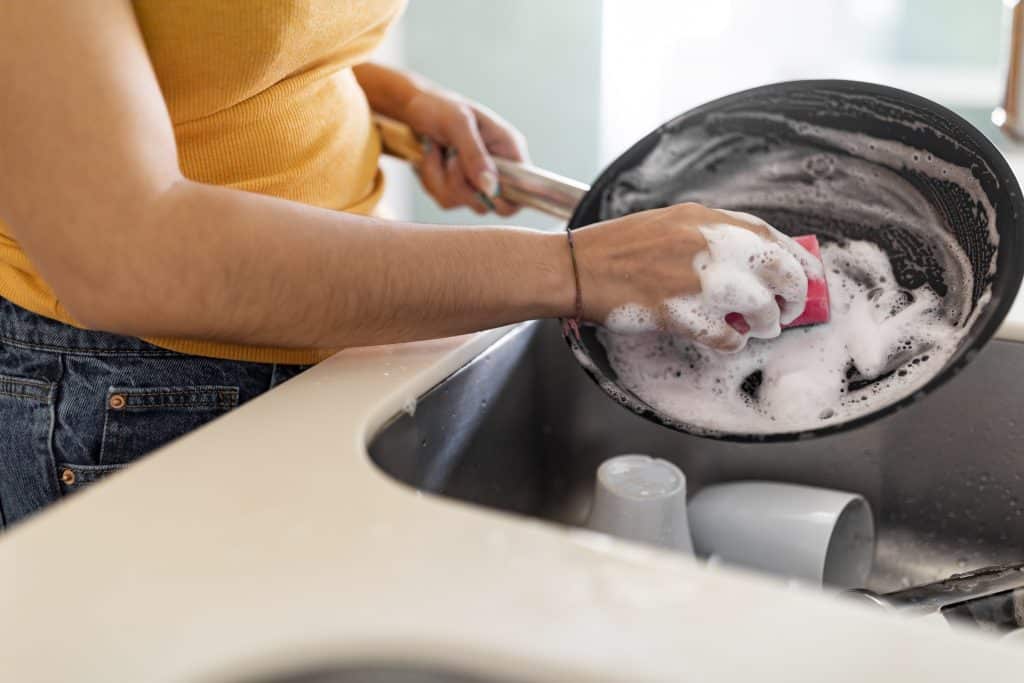
While you’re eager to restore your pan to its former glory, there are certain actions that can do more harm than good. For instance, using bleach or ammonia-based cleaners can be detrimental, especially for non-stick and aluminum pans. These chemicals can react with the material and cause irreversible damage.
Additionally, avoid putting a hot, scorched pan directly into cold water. The sudden temperature change can warp the pan, making it unusable. It’s also important to debunk some myths, such as the idea that cola can clean a scorched pan. While it may sound intriguing, acidic beverages can actually exacerbate the problem, especially on certain materials like cast iron.
How To Restore Your Pan’s Shine

Once the scorch marks are gone, you might want to take additional steps to make your pan look as good as new. For cast iron pans, seasoning is essential. Apply a thin layer of vegetable oil and bake it in the oven to create a non-stick surface. This not only restores its appearance but also extends its lifespan.
For stainless steel and copper pans, a good polish can make a world of difference. Use a specialized metal polish and follow the manufacturer’s instructions carefully. For non-stick pans, a gentle wipe with a damp cloth can often restore the surface. Regular maintenance, like avoiding metal utensils and not cooking acidic foods, can help keep your pan in top condition for years to come.
The Final Scoop: Your Pan’s Second Chance
This comprehensive guide has equipped you with the knowledge and techniques to tackle even the most stubborn scorch marks on your pans. From understanding the reasons behind the scorching to employing household remedies and specialized agents, you now have a toolkit for pan restoration. The journey from a burnt mess to a gleaming kitchen essential is not only possible but also highly rewarding. So, the next time you find yourself facing a scorched pan, you’ll know exactly what to do to give it a second life!



